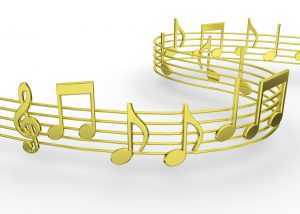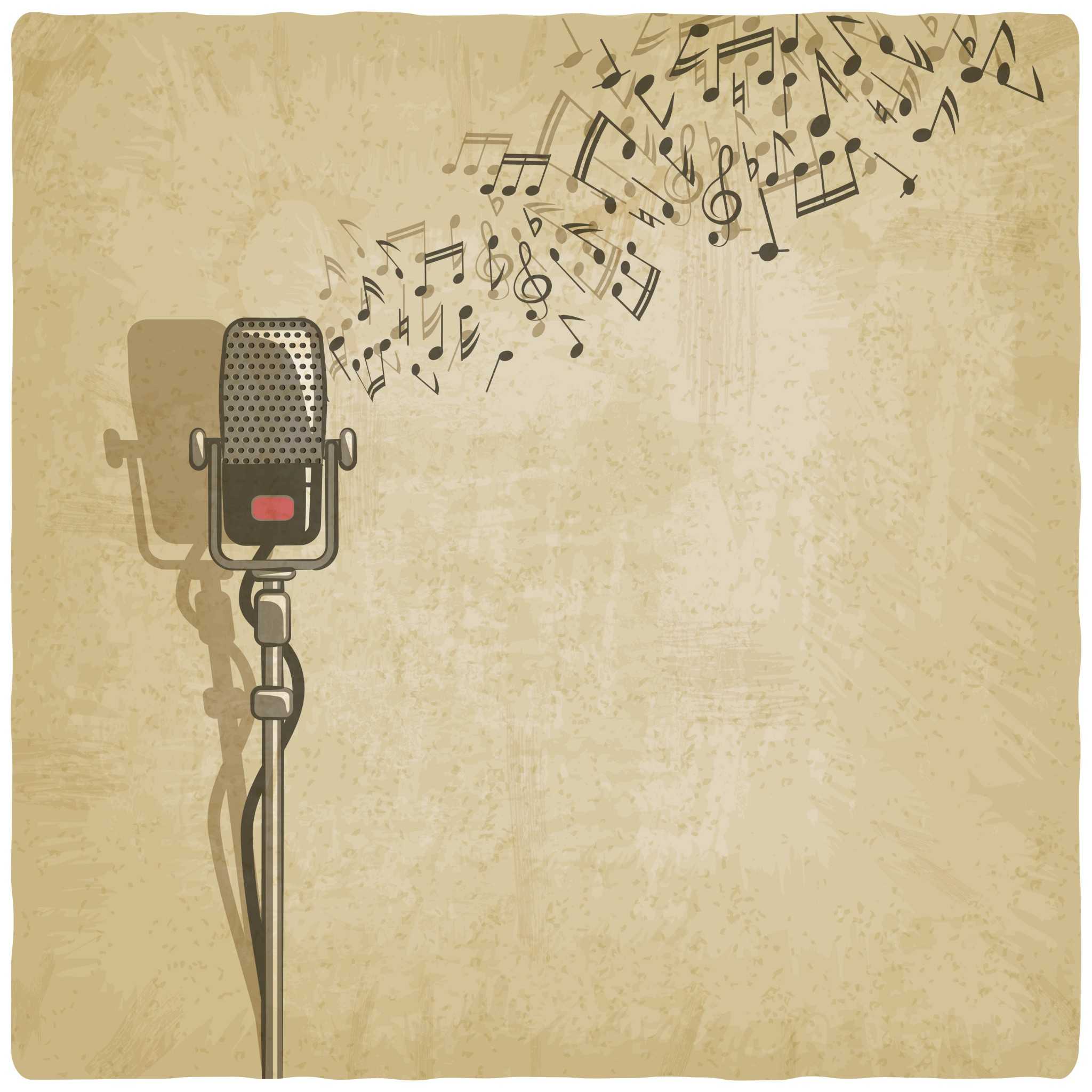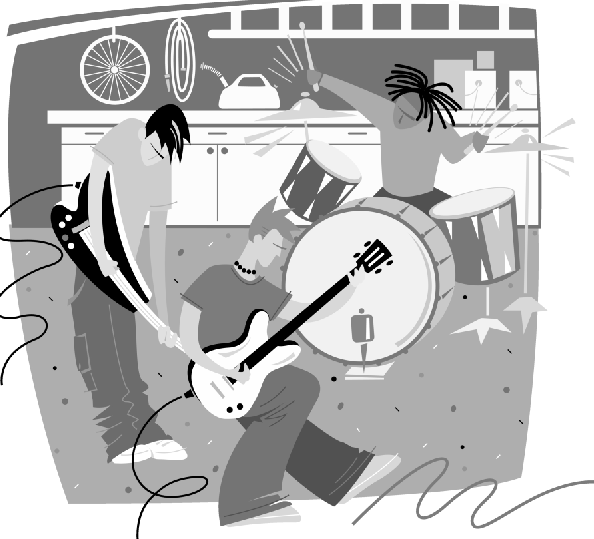For a lot of people, music is a shapeless force that pops in and out of their day like a stray band of clouds. We hear music almost all the time, yet we often forget that each song, jingle, and  composition we hear was thoughtfully-crafted and possibly even agonized over by one or more writers. Song structure is paramount because it allows the songwriter to hold and release tension the way that a good storyteller would. It forms a song’s character and mood, and it sets up powerful sonic scenes that tell the listener a story through music. I’m going to be talking about a few music theory terms in this article. If you’re new to that sort of stuff, please check out my other article about music theory for songwriters on the Musika blog.
composition we hear was thoughtfully-crafted and possibly even agonized over by one or more writers. Song structure is paramount because it allows the songwriter to hold and release tension the way that a good storyteller would. It forms a song’s character and mood, and it sets up powerful sonic scenes that tell the listener a story through music. I’m going to be talking about a few music theory terms in this article. If you’re new to that sort of stuff, please check out my other article about music theory for songwriters on the Musika blog.
Start With Chords
Before you think about things like verses, choruses, and intros, get out your instrument and play around with a few chord progressions. This sort of experimenting is how you’ll find out what key and tempo your song will be in. Recording yourself during this process is a good idea so that you can go back and expound on your ideas later. Once you’ve got an engaging chord progression, start humming or singing a melody over the chords. What you’re writing here may eventually be a verse, chorus, bridge or ending.
A solid chord progression will give you material to work with. Let’s say that your chord progression is F-Bb-C-Dm. This example is in the key of F, but it doesn’t mean the rest of the song has to stay that way. Songwriters often modulate or shift to other keys throughout a piece of music to convey certain musical ideas to the listener. Using the example above, if I wanted to modulate to another key, I could go about this in a few ways. F-Bb-C-Dm is a I-IV-V-iv chord progression, so turning the Bb or IV chord into a IV7 chord is an easy way for me to get to the key of Eb. Eb is closely related to the key of F, so it’s new territory for the listener, but also not a dramatic departure. If I really wanted to take the song to a whole new place, I’d probably take the F note from the I chord (F-A-C) and modulate to a totally unrelated key with F in it like a Db chord (Db-F-Ab). The F note is the link here, and it’s enough to make the transition make sense for the listener.
Melody
 The melody you write for your first section of your song should inform the ones you write for other sections. Every song is different, but typically things like the phrasing and feel of a melody doesn’t change too much throughout a song. However, the contour or shape of the melody does change quite a bit. Typically, verse sections contain a melodic vocal line that is more narrative and subdued contrasted by higher and more grandiose melodies presented in the chorus. Verses tell stories while choruses mostly contain statements. This is the norm, but you don’t need to write your song in a way that follows verse/chorus convention. I urge you to be as creative as you can here. Whatever you do, try to find the character of the song and write in a way that suits it.
The melody you write for your first section of your song should inform the ones you write for other sections. Every song is different, but typically things like the phrasing and feel of a melody doesn’t change too much throughout a song. However, the contour or shape of the melody does change quite a bit. Typically, verse sections contain a melodic vocal line that is more narrative and subdued contrasted by higher and more grandiose melodies presented in the chorus. Verses tell stories while choruses mostly contain statements. This is the norm, but you don’t need to write your song in a way that follows verse/chorus convention. I urge you to be as creative as you can here. Whatever you do, try to find the character of the song and write in a way that suits it.
A composition trick I like to use is to borrow a memorable melody from one section of the song and feature it in another section with a different chord structure. Presenting a familiar melody over new music is a great storytelling device. It gives the listener something familiar to grab on to, but in a renewed and more challenging context.
Tell a Story
Not every song has to literally tell a story (there’s a lot of amazing instrumental music out there), but all successful music presents and sustains some sort of tension and resolve, in my opinion. This sort of give and take can even be found within a few short lines of melody. Call and Response in music is when two melodies are played in quick succession. The first melody often ends on a tense note (the question), with the second melody ending on a resolved note (the answer). Songwriters and composers often use different instruments or vocalists for the Call and Response method.
Where and how you place the sections of your song can have huge effects on the way your song sounds and feels to the listener. For example, hinting at what’s to come later on in the song through an instrumental intro is a great way to link sections together in your song. It works especially well if the verses contain a different mood and character than the choruses. Any songwriting device that can connect sections and play with listener expectations is a good thing. Not every song needs a huge, sweeping narrative, but all songs do need a unique character and voice.
When To Add Other Sections
If you’ve been working on a song for a while, it can be tough to know whether it needs another section or two or if it is great how it is. In my experience, an added tension-filled bridge or a quiet  and subdued ending can do great things for a song that feels unfinished. If your song is lacking a unique character, then consider shaking things up a bit and adding another section to help wrap things up or carry the story along. Instrumental sections and transitions are great opportunities to give the listener something to grab on to. You could reference an ending section melody after the first verse right when the listener expects to hear the chorus. What if you tried mirroring the second verse with an identical instrumental section that presents new instruments or percussion? The choices are endless, but that’s not always a good thing.
and subdued ending can do great things for a song that feels unfinished. If your song is lacking a unique character, then consider shaking things up a bit and adding another section to help wrap things up or carry the story along. Instrumental sections and transitions are great opportunities to give the listener something to grab on to. You could reference an ending section melody after the first verse right when the listener expects to hear the chorus. What if you tried mirroring the second verse with an identical instrumental section that presents new instruments or percussion? The choices are endless, but that’s not always a good thing.
There are 50,000 things you could do with the song structure of your song, but you’ll have to settle on the best few options that suit the music you’re writing. At some point, it’s a good idea to take stock of all the sections of your song and make sure that each one serves a purpose. Just because you can add in instrumentals, endings, and bridges to your song doesn’t mean that you should. It’s sort of like cooking. Some types of food call for a complicated cooking process that can be filled with exotic ingredients and challenging steps, but then you have your grilled cheese sandwich. Cooking a grilled cheese sandwich is easy. What determines how good it will be is the quality of the cheese and bread you use. If you’ve created a memorable song that contains only a few verses and choruses, you might not need anything else to make it stand out. Adding needless sections can sometimes ruin the simple nature of a great song. Write carefully!
Record a Demo
Taking the time to record a simple demo of your song is a great way to gain a good perspective about what sort of song structure you’ll want to use. You could record a crude version of your song on your smartphone, or you might want to try laying down a more produced version that you actually record. Once the demo is done, I recommend not listening to the song for a day or two. Come back to the songwriting process with fresh ears and begin to listen critically to what you’ve written. You might be in for a few surprises.
At this point in the songwriting process, listen back to your demo for transitions or sections that sound out of place. If you listen back to your demo and something makes you think, “Hmmmm. That sounds weird”, then mark down that section and rework it later. Listening with fresh ears is critical, because songwriters hear versions of their song dozens of times and they get used to hearing parts that could be improved.
Transitions
 Adding some thoughtful transitions between sections is a great way to inject continuity and life into your song. A well-placed transition has the power to connect two seemingly unrelated sections of music flawlessly and in a way that doesn’t jar the listener. Normally much shorter than a verse, bridge, or chorus, transitions are vehicles that quickly get us from point A to point B. For example, you might find that there’s a space after the first chorus in your song that could help usher in the next verse more effectively. Try adding in a few measures of a simple instrumental transition. It doesn’t matter if your transitions entail just a few extra guitar strums or a huge orchestra playing the verse melody for a few bars. What’s important here is that you learn to make your transitions suit the unique character and flow of your song. By the way, if you don’t have a large orchestra at your disposal (I sure don’t), you can always use software programs like Garage Band or Logic to add in those sounds electronically. It won’t sound exactly the same, but recent gains in synthesized sounds are impressive, so give them a shot.
Adding some thoughtful transitions between sections is a great way to inject continuity and life into your song. A well-placed transition has the power to connect two seemingly unrelated sections of music flawlessly and in a way that doesn’t jar the listener. Normally much shorter than a verse, bridge, or chorus, transitions are vehicles that quickly get us from point A to point B. For example, you might find that there’s a space after the first chorus in your song that could help usher in the next verse more effectively. Try adding in a few measures of a simple instrumental transition. It doesn’t matter if your transitions entail just a few extra guitar strums or a huge orchestra playing the verse melody for a few bars. What’s important here is that you learn to make your transitions suit the unique character and flow of your song. By the way, if you don’t have a large orchestra at your disposal (I sure don’t), you can always use software programs like Garage Band or Logic to add in those sounds electronically. It won’t sound exactly the same, but recent gains in synthesized sounds are impressive, so give them a shot.
Listen To Other Styles of Music
Sooner or later, songwriters of every skill level and background get stuck. We feel like we keep writing the same thing over and over again. You might find that your efforts to write the most unique and profound music simply lead you to the same sonic dead ends time after time. Don’t get discouraged! Every sort of artist struggles with these kind of challenges. When you find yourself hitting a wall like this, I recommend listening to music genres you’d otherwise never listen to. If you love country music and you want to write in that genre, try listening to Miles Davis for a few days. Do your songs keep sounding like The Cure because they’re your favorite band? Make a playlist of Hip Hop songs and cleanse your palate. Different genres of music typically employ varying song structure philosophies in their music. Take a break from writing for a bit and expose yourself to some new music. This will help give you a renewed perspective on song structure and how to write engaging music.
When To Defy Conventional Song Structure In Your Songwriting
 Most songs contain a song structure with some version of verse-chorus-verse-chorus. Tens of thousands of widely loved and acclaimed songs contain this sort of form, but it doesn’t mean yours has to. I recommend trying something totally new just for the sake of exploration and flexing your creative muscles. What if your song had no chorus? How would it sound to write a song with no repeating sections? Taking the time to explore creativity in your songwriting will do nothing but positive things for your practice, but it could also produce some really interesting music. As an exercise, try writing a song with an unconventional song structure. You’ll probably find it to be challenging, but the process will help you to see form in a new light. Another good exercise is to take the form of a song you love and to copy it, section for section. The already-written form will serve as a sort of sonic road map. Fill out each section with your original music, and see if you’re able to maintain tension and create a song that’s engaging.
Most songs contain a song structure with some version of verse-chorus-verse-chorus. Tens of thousands of widely loved and acclaimed songs contain this sort of form, but it doesn’t mean yours has to. I recommend trying something totally new just for the sake of exploration and flexing your creative muscles. What if your song had no chorus? How would it sound to write a song with no repeating sections? Taking the time to explore creativity in your songwriting will do nothing but positive things for your practice, but it could also produce some really interesting music. As an exercise, try writing a song with an unconventional song structure. You’ll probably find it to be challenging, but the process will help you to see form in a new light. Another good exercise is to take the form of a song you love and to copy it, section for section. The already-written form will serve as a sort of sonic road map. Fill out each section with your original music, and see if you’re able to maintain tension and create a song that’s engaging.
A Good Song
A house could have the world’s strongest foundation, but if its exterior isn’t appealing, no one will want to live in it. The same goes for a song. A solid song structure is very important, but it’s only one piece of the puzzle. Taking the time to craft compelling melodies and engaging chord progressions is actually more important, because those things directly shape a song’s character. Take the time to worry about song structure only after you’ve written something promising. Once you have the beginnings of a good idea, begin the task of figuring out where sections go and what your idea needs to become a great song.







